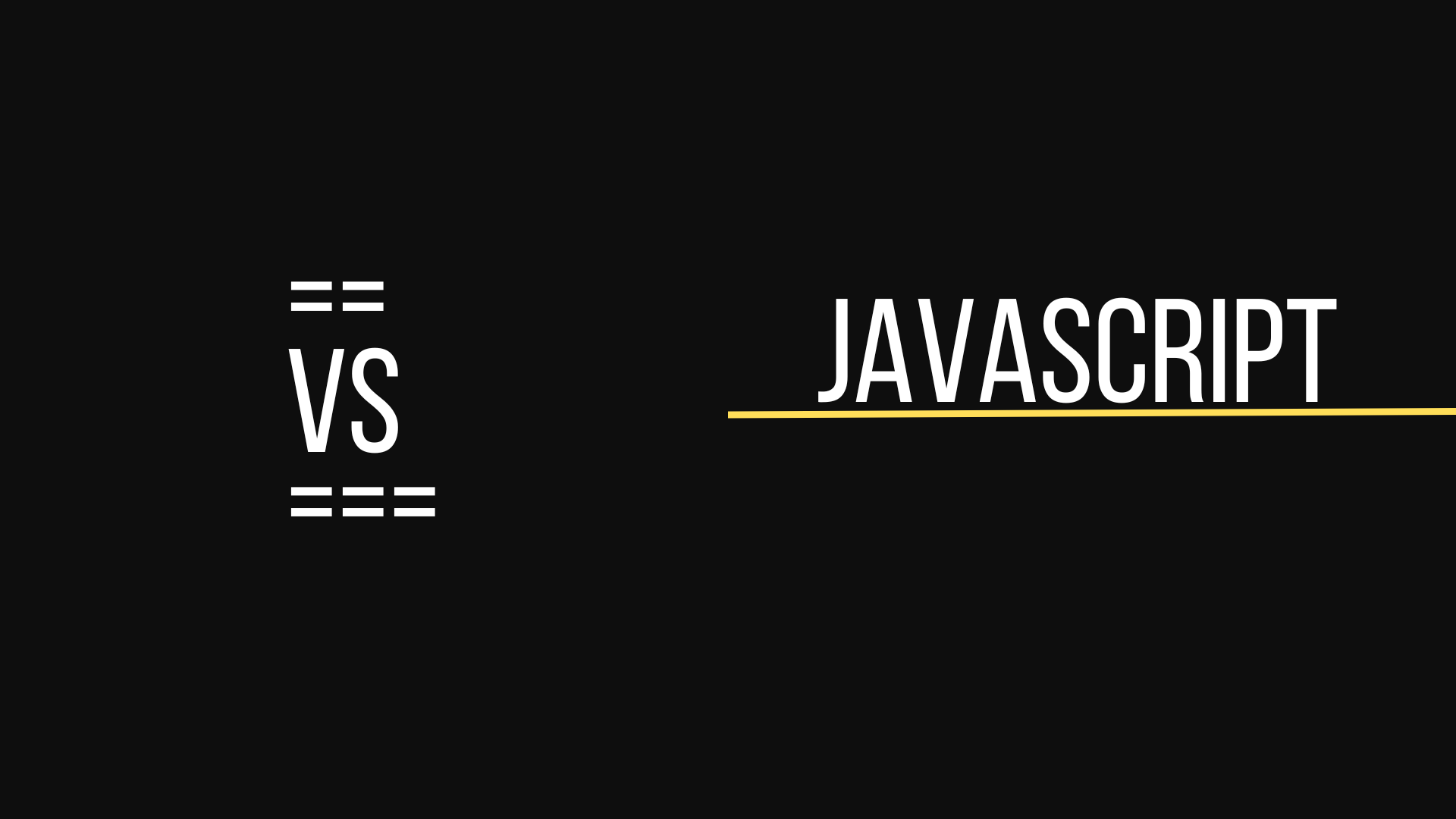Making the Right Choice: "===" vs "==" in JavaScript
 Aniket Lawaniya
Aniket Lawaniya
In JavaScript, equality operators are used to determine the equality of values in expressions and conditions. There are two main equality operators in JavaScript: the double equal sign (==) also known as Loose Equality and the triple equal sign (===) which is known as Strict Equality. While they look similar, they behave differently and it's crucial to understand the differences between them to use them correctly.
What is Type Coercion?
Type coercion is the process of converting a value from one data type to another in order to perform a comparison or a calculation.
The Double Equal Sign (==)
The double equal sign (==) is a loose equality operator that performs type coercion. Type coercion is the process of converting one type of value into another type in order to make a comparison. For example:
42 == "42" // true
In this example, the number 42 is automatically converted to the string "42", and the comparison returns true.
The Triple Equal Sign (===)
The triple equal sign (===) is a strict equality operator that performs no type coercion. It only returns true if both operands are of the same type and their values are equal.
42 === "42" // false
For example, if you compare the number 42 with the string "42", the triple equal sign will return false because the operands are not of the same type.
Advantages and Disadvantages of Type Coercion
The advantage of type coercion is that it can make the code more flexible, as it allows values of different types to be compared as equal. However, type coercion can also lead to unexpected results and can make code harder to debug.
When to Use "==" and "==="
In general, it's recommended to use the triple equal sign (===) in your code because it is more precise and less likely to result in unexpected behavior. However, there may be situations where the double equal sign (==) is more appropriate, such as when you want to compare values that can be of different types but should still be considered equal.
var a = 42;
var b = "42";
a == b // true
a === b // false
In this example, the double equal sign (==) returns true because it performs type coercion and converts the string "42" to the number 42. The triple equal sign (===), on the other hand, returns false because the operands are not of the same type.
Conclusion
In conclusion, the double equal sign (==) and the triple equal sign (===) are two important equality operators in JavaScript. The double equal sign performs type coercion and is more flexible, while the triple equal sign is a strict equality operator that performs no type coercion. Understanding the differences between these two operators is crucial for writing clean, efficient, and bug-free code in JavaScript.
Subscribe to my newsletter
Read articles from Aniket Lawaniya directly inside your inbox. Subscribe to the newsletter, and don't miss out.
Written by
